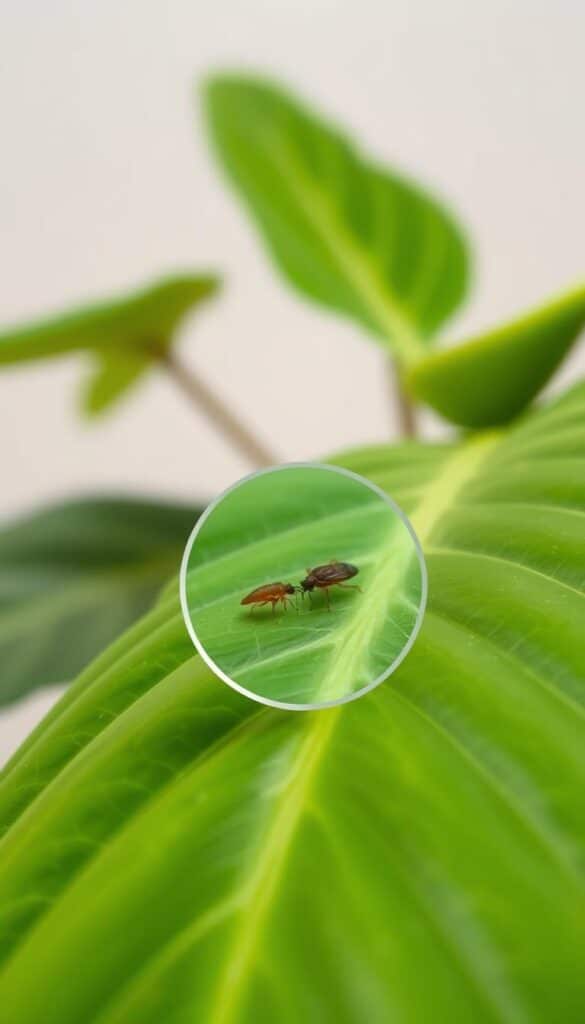Philodendron Tortum stands out among houseplants with its unique, long, fern-like leaves that add a touch of whimsy to any room. This plant is a favorite for many, and for good reason—it’s as fascinating as it is beautiful. But when I first received my Philodendron Tortum, it arrived in less-than-ideal condition. The leaves were yellowing, and the plant looked stressed from its long journey. This experience taught me the importance of a healthy root system and the role I play in helping it thrive.
Proper watering is key to preventing the plant from drying out or developing root rot. Finding the right balance is crucial. Light also plays a significant role in the health of your Philodendron Tortum. Ensuring it gets the right amount of light will support its growth and keep those stunning leaves vibrant. Choosing the correct soil mix and maintaining proper humidity levels will create an ideal environment for this tropical plant to flourish.
In this guide, I’ll walk you through everything you need to know to transform your Philodendron Tortum into a thriving specimen. Whether you’re a seasoned plant parent or just starting out, these tips will help you create the perfect home for your plant. Let’s dive in and explore how to give your Philodendron Tortum the best life possible.
Understanding Your Philodendron Tortum
Philodendron Tortum captivates plant enthusiasts with its striking, elongated leaves that bring a unique charm to any space. Native to tropical regions, this plant thrives in environments with high humidity and filtered light. Its popularity stems from its adaptability to indoor conditions, making it a favorite for many.
Discovering the Plant’s Origins and Natural Characteristics
Originating from the tropical areas of Central and South America, Philodendron Tortum has adapted to grow in various lighting conditions. Its natural habitat includes forest floors and tree canopies, where it climbs using its robust root system. This adaptability makes it a versatile choice for indoor spaces.
Juvenile Versus Mature Leaf Differences
The transformation from juvenile to mature leaves is a fascinating aspect of Philodendron Tortum. Juvenile leaves are smaller, heart-shaped, and have a softer texture. As the plant matures, the leaves elongate, developing deep lobes and a more rigid texture.
| Characteristic | Juvenile Leaves | Mature Leaves |
|---|---|---|
| Shape | Heart-shaped | Deeply lobed |
| Size | Smaller | Larger |
| Texture | Softer | Rigid |
https://www.youtube.com/watch?v=xUnUOmjw1kA
Understanding these stages helps in providing the right care. The root system’s health is crucial, especially in the first year, as it supports the plant’s growth. A balanced fertilizer and a well-draining soil mix promote robust development, ensuring your Philodendron Tortum thrives.
Essential Lighting and Watering Techniques for a philodendron tortum care guide
Light and water are two of the most critical factors in keeping your plant healthy. Proper lighting helps with photosynthesis, while correct watering ensures the roots stay strong. Let’s explore how to get both right.
Maximizing Indoor Natural and Artificial Light
Natural light is ideal, but not always enough. Placing your plant near a window with bright, indirect light is a great start. If natural light is scarce, LED grow lights can be a game-changer. They provide consistent light without overheating the plant. I use LED grow lights set to 20,000 lux, which is perfect for promoting healthy growth.

Consistent care in lighting is key. I’ve noticed that even with LED lights, the plant responds better when the light is consistent. This balance helps the plant thrive without burning the leaves.
Watering Strategies: Timing, Amount, and Techniques
Watering is an art. Too much can cause root rot, while too little leads to dry leaves. For a 5″ pot, I water with 0.5 cups every 9 days. Adjust this based on light exposure—more light means more water, but always check the soil first.
I also use moss in my watering routine. Moss helps retain moisture around the roots, reducing the need for frequent watering. It’s especially useful when propagating cuttings.
Timing is everything. I water in the morning so the plant has the whole day to absorb what it needs. This schedule has made a big difference in the health of my plant.
Every part of the plant needs attention. From the developing stem to the new leaf, each part plays a role in its overall health. I use a moss pole to support the climbing vines, preventing them from getting leggy. This support helps the plant grow strong and full.
Propagation is another area where timing and technique matter. I’ve had success with node cuttings. I take cuttings just below a node, remove lower leaves, and plant them in moss. It’s a reliable method that works well for this plant.
In summary, the right combination of light and water, along with proper care techniques, will transform your plant. With patience and attention, you can help it reach its full potential.
Optimizing Soil, Fertilizer, and Propagation Methods
Creating the right environment for your plant starts with the soil. A well-crafted potting mix is essential for healthy root growth and moisture balance. I prefer a mix that includes coco coir, peat moss, perlite, and bark chips. Each ingredient serves a specific purpose: coco coir and peat moss retain moisture, while perlite and bark chips improve drainage and aeration.
When it comes to propagation, node cuttings are my go-to method. I take cuttings just below a node, remove lower leaves, and plant them in moss. This technique has proven reliable and effective. For support, a moss pole is invaluable. It helps the plant climb naturally, keeping the vines strong and full. Regularly monitoring the root system ensures everything is functioning as it should.
- Use perlite to enhance drainage and prevent waterlogging.
- Add bark chips for organic structure and improved aeration.
- Employ a moss pole to support climbing vines.
By focusing on these elements, you can create an ideal setup for your plant to thrive. Proper potting mix preparation and effective propagation techniques lay the foundation for long-term success.
Troubleshooting Common Issues and Managing Pests
Every plant parent faces challenges, and Philodendron Tortum is no exception. Whether it’s yellowing leaves or unwanted pests, identifying issues early is key to maintaining your plant’s health. I’ve learned that even small mistakes, like overwatering or inconsistent sunlight, can cause stress. Let’s explore how to tackle these problems and keep your plant thriving.
Identifying Signs of Overwatering and Underwatering
One of the most common issues is overwatering, which can lead to root rot. If you notice yellowing leaves or a soft stem, it’s a sign you might be giving too much water. On the flip side, underwatering can cause leaves to droop and turn crispy. To avoid these extremes, stick to a consistent watering schedule and always check the soil moisture first.
Practical Tips for Pest Control and Plant Health
Pests like spider mites and thrips can wreak havoc on your Philodendron Tortum. Regularly inspecting your plant, especially the underside of leaves, is crucial. If you spot any pests, isolate your plant and treat it with neem oil or insecticidal soap. Preventative measures, such as keeping your plant in a well-ventilated area, can also help deter pests.
| Issue | Symptoms | Solution | Prevention |
|---|---|---|---|
| Overwatering | Yellow leaves, soft stems | Stop watering, repot with fresh soil | Use well-draining soil, check moisture |
| Underwatering | Droopy, crispy leaves | Water thoroughly, adjust schedule | Consistent watering, monitor environment |
| Pests | White spots, sticky residue | Treat with neem oil/insecticidal soap | Regular inspections, good air circulation |

By staying vigilant and addressing issues promptly, you can protect your Philodendron Tortum from common problems. Remember, a healthy plant starts with the right balance of water, sunlight, and soil. With a little practice, you’ll master the art of nurturing your plant to its fullest potential.
Wrapping Up My Journey With Philodendron Tortum
Reflecting on my journey with Philodendron Tortum, I am reminded of the dedication and love I’ve poured into nurturing this unique houseplant. It’s been a rewarding experience that has enriched my home and daily routine, turning my space into a lush oasis.
Like any houseplant, Philodendron Tortum comes with its own set of challenges. I’ve encountered problems like overwatering and pests, but each issue has been an opportunity to learn and grow. By addressing these problems day by day, I’ve developed a deeper understanding of what my plant needs to thrive.
Regular humidity misting has become a cornerstone of my care routine. Over the course of a month, I’ve noticed significant improvements in the plant’s health and vitality. Ensuring proper drainage and avoiding soil dry watering are equally important, as they prevent root rot and keep the plant strong.
Indirect light plays a crucial role, even in the final stages of care. I’ve found that placing my Philodendron Tortum near a window with bright, indirect light promotes healthy growth and vibrant leaves. This consistent approach has been key to its success.
As you embark on your own journey with Philodendron Tortum, remember that every day is an opportunity to learn and connect with your plant. With patience and attention, you’ll unlock its full potential. Happy planting!
